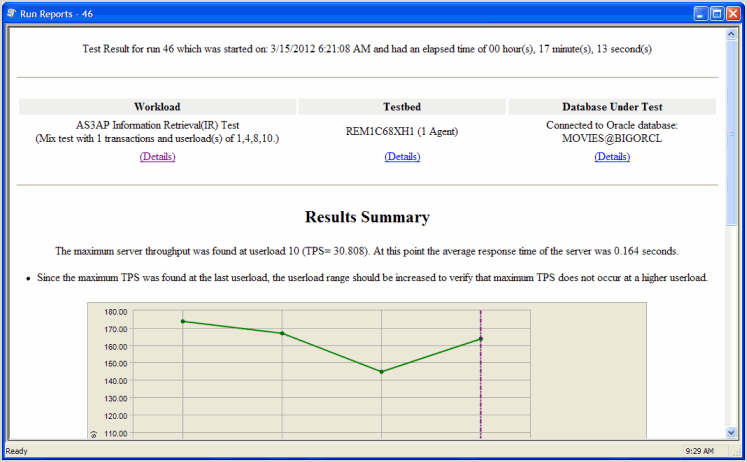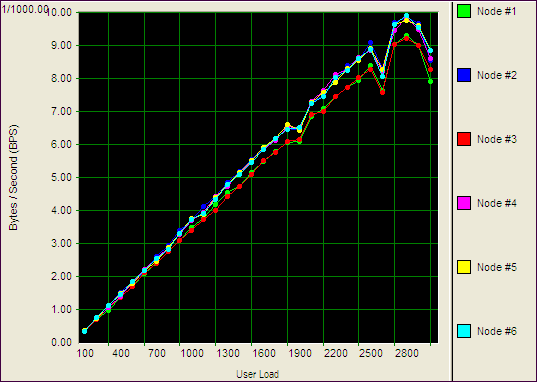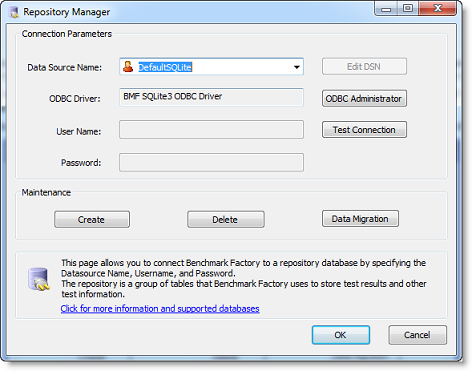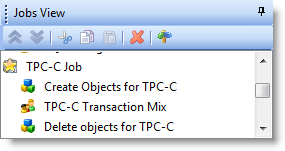The Benchmark Factory Agent is a component used in Benchmark Factory to create virtual users which simulate real-world user activity by placing transactions against the database-under-test. The Benchmark Factory Agent is installed when the Benchmark Factory Console is installed. In addition, you can install additional agents on other remote machines. Each Benchmark Factory agent can spawn multiple virtual-user sessions and Benchmark Factory can control hundreds of Agent machines.
After installing additional agents, use your Benchmark Factory Console to define a connection to each agent machine. When you create a new benchmark test through the Console, you can select which of the defined agents to use to generate the user load.
Each virtual user is a separate thread, acting independently of the other virtual users, with its own connection to the system-under-test. Each virtual user tracks its own statistics, including transaction times and the number of times a transaction executes.
The Benchmark Factory Console allows you to view information about all currently running agents, provides a way to connect to and manage remote agents, and allows you to specify some global agent settings. In addition, the primary Agent, Agent.exe, includes a GUI which displays transaction and virtual user statistics during test execution.
Benchmark Factory provides several types of agent components:
BMFAgent.exe—(Windows or Linux) The non-GUI agent. You can use BMFAgent.exe to integrate Benchmark Factory into your continuous integration or continuous testing process. See BMFAgent.exe for more information.
Review the following topics to learn how to use the Benchmark Factory Agent.
Benchmark Factory Run Reports is a separate executable that provides a comprehensive and detailed collection of database load testing results. With Benchmark Factory you can drill down into a database to view a wide array of information and statistics that gives you accurate insight into database performance. Run Reports Viewer allows you to access Benchmark Factory load testing results.
Note: Three instances of Run Reports can be viewed at one time.

From Benchmark Factory run reports you can cut and paste test results into the Clipboard.
Server throughput is the measurement of database capacity. Benchmark Factory allows you to view a variety of server throughput statistics that include:
The Benchmark Factory transaction comparison graph provides users with a comparison of the individual transaction performance as they compare to each other. This is most useful when analyzing a SQL Scalability test.
Benchmark Factory allows you to load test Oracle Real Application Clusters (RAC) to determine system capacity. The cluster performance graph allows users to view the performance of individual nodes.

Note: If you create a new Benchmark Factory 5.5 (or later) repository, earlier versions of Benchmark Factory will not work against this repository.
The Repository is a database where all of the test results are stored. Benchmark Factory inserts test results into the repository and provides an easy way to access the data. By default, the Repository is a SQLite database that resides on the same machine as Benchmark Factory. The Repository can reside on another database server if required.
Note: By default in Benchmark Factory 7.1.1 or earlier, a MySQL database is created and used as the Repository, unless you selected the SQLite option during installation. In Benchmark Factory 7.2 or later, by default a SQLite database is created and used as the Repository.
To change the database, select the Data Source Name of the ODBC connection for the new database. To migrate data from one database to another, click Data Migration to open the Data Migration Wizard.
Note: If the database structure does not exist on the selected database, a prompt to create the structure will appear when OK is clicked.
The supported database types are:
To open the Repository Manager
The Repository Manager opens. Modify connection parameters or perform maintenance functions.

Review the following for additional information:
| Connection Parameters | |
|
Data Source Name |
Data Source name of the ODBC connection used to connect to the repository database. |
|
ODBC Driver |
Current ODBC driver |
|
User Name |
The User Name used to log into the selected database. |
|
Password |
The Password associated with the user name used to log into the database. |
|
Edit DSN |
Displays the ODBC connection information dialog for the selected data source. |
|
ODBC Administrator |
Displays the ODBC Data Source Administrator dialog. Use this to add and edit ODBC connections. |
|
Test Connection |
Tests the connection of the currently selected ODBC Data Source. |
| Maintenance | |
|
Create |
Creates the repository objects on the selected database. |
|
Delete |
Deletes the repository objects on the selected database. Warning: This will delete all test results stored in the Repository. |
|
Data Migration |
Launches the Data Migration Wizard. |
The Jobs View pane displays the list of jobs. After you create and save a job, the job is displayed in the Jobs View pane. You can also use the Jobs View pane to identify the jobs that are currently running and the jobs that are scheduled to run.

Use the Jobs View pane to do the following:
To run a job
 .
. To edit an existing job
 . The Edit Job Wizard opens. To learn more about the Job Wizard, see The Job Wizards.
. The Edit Job Wizard opens. To learn more about the Job Wizard, see The Job Wizards. To view test results
From the Jobs View pane, you can view job status.
The following job states are identified:
The Jobs View toolbar provides user functionality to save or delete jobs.

|
|
Move the selected test up in the list. |
|
|
Move the selected test down in the list. |
 |
Delete the selected item from the Jobs View. |
 |
Toggles tree-view on and off. |
Note: To save a job as a Benchmark Factory script, select the job and click Save in the Benchmark Factory toolbar or select File | Save.